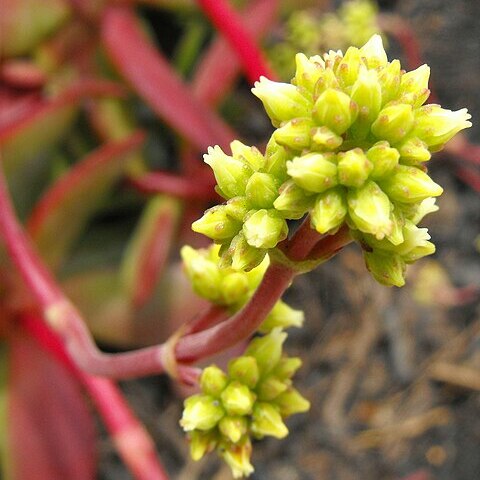Perennial dwarf shrub, succulent, much branched, erect, woody, 0.3 m high, old leaves deciduous. Leaves opposite, oblanceolate to obovate, 10-30 x 4-15 mm, obtuse to acute, slightly convex both sides but with sharp margins, tomentose, pubescent to glabrous, green to brown. Inflorescence an elongate, terminal thyrse with 1-4 globular dichasia; flowers sessile; peduncle 0.08-0.15 m long, puberulous to glabrous. Calyx fleshy, green, puberulous to glabrous, marginal cilia. Corolla tubular, fused 0.3-0.5 mm, cream-coloured to pale yellow; lobes oblanceolate to panduriform, 2-3 mm long, terminal elongate ellipsoid dorsal appendage present, membranous apex on inside. Flowering time Sept.-Feb.
Much-branched, low shrublet, 0.1-0.3 m tall. Leaves oblanceolate to obovate, flat to slightly convex above and below, 10-30 x 4-15 mm, tomentose to glabrous. Flowers in few globular clusters, on an unbranched inflorescence, on a pubescent to glabrous peduncle 0.08-0.15 m long, tubular, petals 2-3 mm long, fused in lower 0.5 mm, each with a ± spherical, terminal appendage, pale yellow.
Shrublet to 30 cm. Leaves opposite, oblanceolate to obovate, hairy or smooth, margins ciliate. Flowers in rounded to elongate clusters on puberulous to smooth peduncles, tubular, cream-coloured, petals ± 2.5 mm long, petals with subglobose dorsal appendage.

